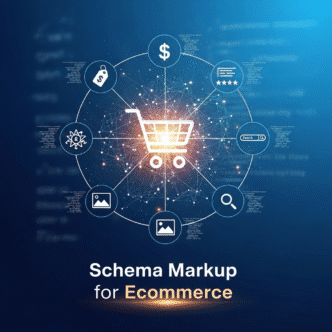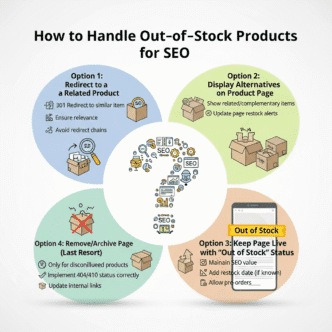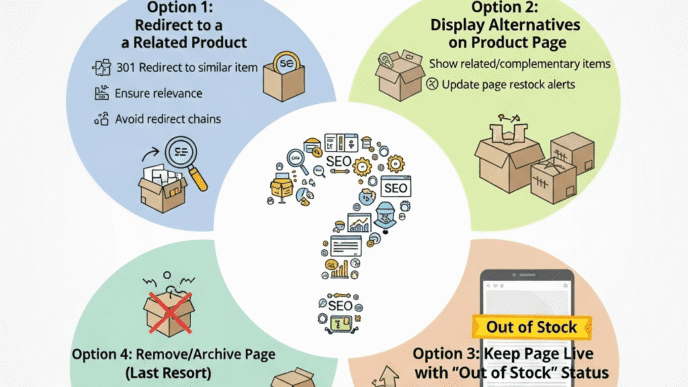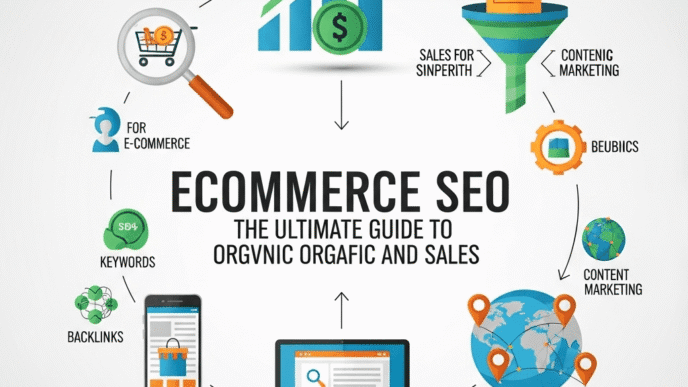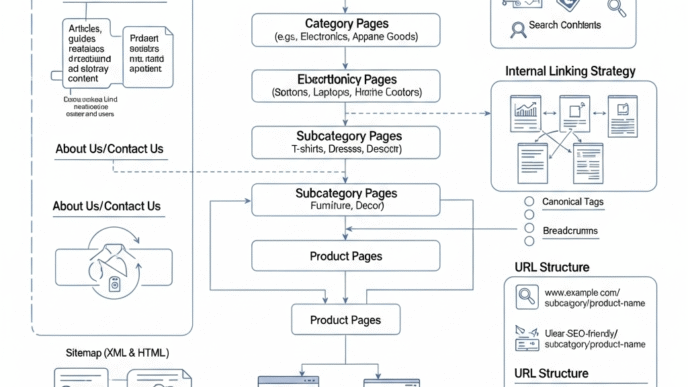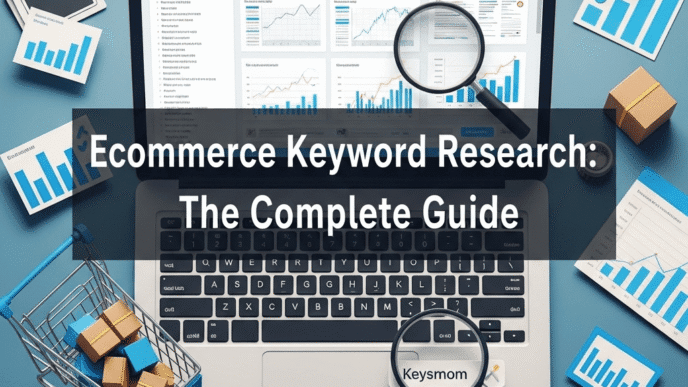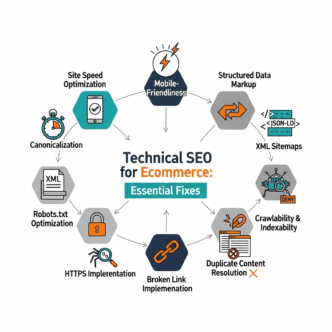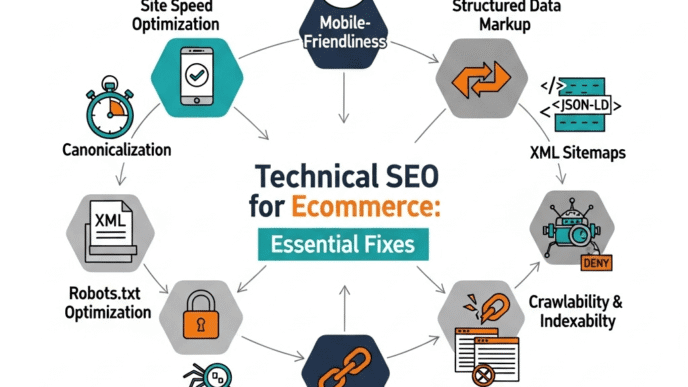Your ad budget just doubled, but sales stayed flat. Every click costs more, and the moment you pause campaigns, traffic disappears. Sound familiar?
Here’s the liberating truth: ecommerce content marketing lets you build sustainable organic traffic that doesn’t vanish when ad budgets run dry. While competitors burn cash on pay-per-click, smart stores create content that ranks, drives traffic, and sells—for free, forever.
This guide reveals exactly how to create ecommerce blog content that attracts customers, builds authority, and generates sales without spending a dime on ads. Let’s turn your content into a traffic-generating, revenue-producing machine.
Table of Contents
ToggleWhy Ecommerce Content Marketing Beats Paid Ads Long-Term
Let’s talk numbers. According to Demand Metric, content marketing costs 62% less than traditional marketing and generates about 3 times as many leads. But the real magic? Content keeps working long after you publish it.
The paid ads trap:
- Traffic stops when spending stops
- Costs increase as competition grows
- No compounding returns
- Zero brand building
- Diminishing returns over time
The content marketing advantage:
- Content ranks indefinitely
- Traffic compounds over time
- Builds brand authority and trust
- Captures every funnel stage
- Assets appreciate (don’t depreciate)
Think of paid ads as renting traffic and content marketing as buying property. Ads are expensive rent payments that never build equity. Content is an asset that grows in value.
Pro Tip: According to HubSpot research, companies that blog receive 97% more links to their website and 55% more website visitors than those that don’t. Content isn’t just cheaper than ads—it’s exponentially more effective for long-term growth.
For the complete foundation of ecommerce SEO including content strategy, check our ultimate ecommerce SEO guide.
What Is Ecommerce Content Marketing and How Does It Work?
Ecommerce content marketing is creating valuable, helpful content that attracts your target customers, builds trust, and ultimately drives purchases—without direct selling.
The Content Marketing Funnel for Ecommerce
Top of Funnel (Awareness):
- Educational blog posts
- How-to guides and tutorials
- Industry trends and insights
- Problem-solving content
Middle of Funnel (Consideration):
- Product comparison guides
- Buying guides and recommendations
- Case studies and testimonials
- Expert reviews and analysis
Bottom of Funnel (Decision):
- Product demonstrations and videos
- Detailed specifications and FAQs
- Customer success stories
- Special offers and guarantees
Each piece of content serves a specific purpose—educating, nurturing, or converting customers at different journey stages.
Pro Tip: Don’t create only bottom-funnel content (product-focused). The money is in top and middle-funnel content that captures people BEFORE they’re ready to buy. Build trust early, and conversions follow naturally when buying time arrives.
How to Create Ecommerce Blog Content That Actually Drives Sales
Blog content for online stores fails when it’s promotional fluff. Succeeds when it genuinely helps people.
Strategy 1: Answer Real Customer Questions
Your customers are already asking questions—on Google, in emails, on social media. Answer them comprehensively.
Where to find questions:
- Analyze your customer service emails
- Monitor social media comments
- Use Answer the Public for question discovery
- Check “People Also Ask” boxes in Google
- Review product review comments
- Survey your email list
Question-based content examples:
- “How to Choose the Right [Product] for [Specific Need]”
- “What’s the Difference Between [Product A] and [Product B]?”
- “How Long Does [Product] Last? Complete Care Guide”
- “Can You Use [Product] for [Alternative Use]?”
- “Why Is [Product] So Expensive? The Real Cost Breakdown”
Real example: A coffee equipment store analyzed 6 months of customer emails and identified 37 frequently asked questions. They wrote comprehensive blog posts answering each one. Within 12 months, those 37 posts generated 47,000 organic visitors and $180,000 in attributed revenue.
Pro Tip: Create a swipe file of customer questions. Every support email, social comment, or chat inquiry is potential blog content. The questions customers ask are exactly what prospects search for on Google.
Strategy 2: Create Ultimate Buying Guides
Buying guides capture high-intent traffic from people actively researching products.
Buying guide formula:
- Introduction: Why this purchase matters
- Key factors: What to consider when choosing
- Product types: Different categories and options
- Recommendations: Specific products for different needs
- FAQ: Common questions answered
- Conclusion: How to make final decision
Buying guide examples:
- “The Ultimate Guide to Choosing Running Shoes (2025 Buyer’s Guide)”
- “Best Standing Desks for Every Budget: Complete Comparison”
- “How to Choose Organic Baby Clothes: Safety, Certifications, and Top Picks”
Pro Tip: Include your products in buying guides, but also mention competitors objectively. Google rewards comprehensive, unbiased content. Plus, shoppers trust honest comparisons more than obvious promotional content. You’ll convert more by being helpful than by being pushy.
Learn more about optimizing content for conversions in our comprehensive ecommerce SEO guide.
Strategy 3: Leverage User-Generated Content
Your customers create content for you—leverage it strategically.
UGC content types:
- Customer photos in product roundups
- Video testimonials with full stories
- Case studies from successful customers
- Community-created tutorials and tips
- Customer success stories and transformations
How to encourage UGC:
- Create branded hashtags customers can use
- Run photo contests with your products
- Feature customers on your blog and social media
- Offer incentives for sharing stories
- Make submission easy with simple forms
Pro Tip: Always get explicit permission before using customer content. Send a friendly email asking if you can feature their story/photo on your blog. Most customers love being featured, but respect matters—never assume permission.
Strategy 4: Create Seasonal and Trending Content
Timely content captures search traffic spikes around events, seasons, and trends.
Seasonal content ideas:
| Season/Event | Content Opportunities |
|---|---|
| Holiday Shopping | Gift guides, last-minute ideas, wrapping tutorials |
| New Year | Goal-setting content, product recommendations for resolutions |
| Back to School | Organization tips, product comparisons, budgeting guides |
| Summer/Winter | Seasonal product guides, care tips, storage advice |
| Black Friday | Deal guides, shopping strategies, comparison content |
Pro Tip: Create and publish seasonal content 2-3 months before peak season. Google needs time to crawl, index, and rank your content. Publishing “Christmas gift guides” in December means you’ve already missed the traffic peak.
Strategy 5: Build Topical Authority Through Content Clusters
Topical authority means establishing your site as THE expert resource on specific topics.
How content clusters work:
- Pillar content: Comprehensive guide on broad topic
- Cluster content: Detailed posts on specific subtopics
- Internal linking: All cluster posts link to pillar and each other
Example cluster for “Running Shoes” store:
Pillar: “The Complete Guide to Running Shoes (Everything You Need to Know)”
Cluster Posts:
- “How to Choose Running Shoes for Flat Feet”
- “Trail Running vs Road Running Shoes: What’s the Difference?”
- “When to Replace Your Running Shoes (and Warning Signs)”
- “Best Running Shoes for Marathon Training”
- “Breaking In New Running Shoes Without Blisters”
- “Running Shoe Technology Explained: What Do All These Terms Mean?”
Each cluster post links to the pillar guide and related cluster posts, creating a topic-focused content network Google recognizes as authoritative.
Pro Tip: Start with 1 pillar post and 8-12 cluster posts for each major product category. This depth signals expertise to Google and captures traffic at every research stage. Don’t spread thin across many topics—go deep on a few.
What Are the Best Content Marketing Ideas for Ecommerce Stores?
Let’s expand beyond basic blog posts with content marketing tactics that actually work.
1. Interactive Tools and Calculators
Interactive content generates backlinks and social shares naturally.
Tool ideas by industry:
- Fashion: Virtual try-on, size converter, outfit generator
- Home goods: Room planner, paint calculator, furniture visualizer
- Fitness: Calorie calculator, workout plan generator, progress tracker
- Food: Recipe scaler, meal planner, nutrition calculator
- Baby products: Growth tracker, feeding schedule, milestone tracker
Real example: A home improvement store created a “Paint Calculator” tool. Customers input room dimensions, and it calculates needed paint quantity. This simple tool generated 340 backlinks and 18,000 monthly visitors—none of which would have come from product pages.
2. Video Content That Educates and Demonstrates
Video content dominates engagement and search visibility.
High-performing ecommerce video types:
- Product demonstrations and unboxings
- How-to tutorials using your products
- Behind-the-scenes manufacturing or sourcing
- Customer testimonials and success stories
- Expert interviews and Q&A sessions
- Comparison videos (honest assessments)
Pro Tip: YouTube is the second-largest search engine. Optimize video titles, descriptions, and tags with target keywords. Include links back to relevant product pages. Videos rank in both YouTube and Google search results—double visibility opportunity.
3. Original Research and Data Studies
Data-driven content earns backlinks and media coverage better than any other content type.
Research content ideas:
- Survey your customers about industry trends
- Analyze your sales data for insights
- Compile industry statistics and benchmarks
- Create annual “State of [Industry]” reports
- Compare product performance data
Real example: A pet supply company surveyed 5,000 pet owners about pandemic pet adoption. They published findings in a comprehensive report. Result: 89 backlinks from major publications, 47,000 social shares, and coverage in USA Today and Forbes. Cost: $1,500 for survey platform.
Pro Tip: Don’t need massive sample sizes for impactful research. Even surveying 500-1,000 customers can generate newsworthy insights if you ask interesting questions and present data visually with charts and infographics.
4. Expert Roundups and Interviews
Expert content adds credibility and taps into experts’ audiences.
How expert roundups work:
- Choose a specific topic or question
- Reach out to 10-20 industry experts
- Ask for their insights (200-300 words)
- Compile responses into comprehensive post
- Notify experts when published (they often share)
Example roundup questions:
- “What’s Your #1 Tip for [Specific Task]?”
- “What’s the Biggest Mistake People Make with [Product Category]?”
- “How Do You See [Industry] Evolving in 2025?”
Pro Tip: Make participation easy for experts—ask specific questions, provide word count guidance, and respect their time. When they share the published roundup with their audience, you gain exposure to thousands of potential customers.
5. Long-Form Ultimate Guides
Comprehensive guides rank well, earn backlinks, and establish authority.
Ultimate guide characteristics:
- 3,000-5,000+ words
- Covers topic exhaustively
- Includes images, videos, tables
- Actionable and practical
- Regularly updated
Guide topic formulas:
- “The Complete Guide to [Topic]”
- “Everything You Need to Know About [Subject]”
- “The Ultimate [Activity] Guide for Beginners”
- “[Product Category] 101: From Basics to Advanced”
Pro Tip: Don’t publish and forget. Update ultimate guides annually with new information, current year in the title, and fresh examples. Google rewards freshness, and updated guides maintain rankings year after year.
For more content strategy integration with technical SEO, see our ecommerce SEO ultimate guide.
How to Develop a Content Strategy to Increase Organic Traffic
Content strategy for ecommerce requires more than random blog posts—you need a systematic approach.
Step 1: Identify Your Content Pillars
Content pillars are the 3-5 main topics your content addresses.
Example for outdoor gear store:
- Pillar 1: Hiking and Backpacking
- Pillar 2: Camping Essentials
- Pillar 3: Outdoor Safety and Skills
- Pillar 4: Gear Care and Maintenance
- Pillar 5: Trail Guides and Destinations
All content falls under one of these pillars, building focused topical authority.
Step 2: Create a Content Calendar
Consistent publishing beats sporadic brilliance. Plan content 3 months ahead.
Monthly content mix:
- 2-3 educational how-to posts
- 1 buying guide or product comparison
- 1 seasonal/timely piece
- 1 long-form ultimate guide
- 1 customer story or case study
Pro Tip: Use Google Trends to identify seasonal search patterns. Plan and publish content 2-3 months before search volume peaks, giving Google time to index and rank your content.
Step 3: Optimize Every Piece for SEO
SEO content creation ensures content ranks and drives traffic.
On-page SEO checklist:
- [ ] Target keyword in title (near beginning)
- [ ] Keyword in first 100 words
- [ ] H2 and H3 headings with keyword variations
- [ ] 300+ words minimum (1,500+ for competitive topics)
- [ ] Internal links to related content and products
- [ ] External links to authoritative sources
- [ ] Optimized images with descriptive alt text
- [ ] Meta description with target keyword
- [ ] URL includes primary keyword
Pro Tip: Write for humans first, optimize for search engines second. Content that reads naturally and helps people will always outperform keyword-stuffed SEO content. Google’s algorithm is sophisticated enough to reward quality over manipulation.
Step 4: Promote and Amplify Content
Great content without promotion stays invisible. Distribution matters as much as creation.
Content promotion channels:
- Email newsletter to existing customers
- Social media (focus on 1-2 platforms)
- Industry forums and communities
- Influencer outreach for sharing
- Guest post links to your content
- Paid social promotion (small budget for best pieces)
- Repurpose into different formats (infographic, video, podcast)
Pro Tip: Spend 20% of time creating content and 80% promoting it. One exceptional, well-promoted piece beats ten mediocre pieces nobody sees. Focus on distribution as much as creation.
How AI Is Transforming Ecommerce Content Marketing
Artificial intelligence is reshaping blogging for ecommerce SEO in significant ways.
AI for Content Ideation and Research
AI-powered tools accelerate content planning:
- Generate topic ideas based on keywords
- Identify content gaps in your niche
- Analyze competitor content strategies
- Suggest optimal content formats
- Predict trending topics before they peak
Tools like Clearscope, MarketMuse, and Frase use AI to recommend topics and optimize content for search intent.
AI for Content Creation (With Caveats)
AI writing tools (ChatGPT, Jasper, Copy.ai) can:
- Generate content outlines
- Create first drafts quickly
- Suggest headline variations
- Write product descriptions at scale
- Summarize research and data
Critical limitations:
- AI produces generic content without unique insights
- Lacks brand voice consistency
- Can’t replicate human expertise and experience
- May hallucinate facts or statistics
- Google can detect and devalue pure AI content
Pro Tip: Use AI as a writing assistant, not a replacement for human expertise. Generate outlines and first drafts with AI, then heavily edit with your unique insights, real examples, and brand personality. The combination of AI efficiency and human expertise creates genuinely valuable content.
AI for Content Optimization
AI optimization tools improve existing content:
- Identify keyword opportunities
- Suggest content structure improvements
- Analyze readability and engagement
- Recommend internal linking opportunities
- Predict ranking potential
Pro Tip: According to Google’s Search Quality Guidelines, E-E-A-T (Experience, Expertise, Authoritativeness, Trustworthiness) matters more than ever. AI can help structure content, but human expertise, real experience, and authentic insights are what Google rewards and what customers trust.
Real-World Ecommerce Content Marketing Success Story
Let’s examine a concrete content strategy to increase organic traffic with measurable results.
The Business: Specialty coffee equipment retailer, $1.5M annual revenue, heavy reliance on paid ads
The Problem:
- 90% of traffic from paid ads ($15,000/month ad spend)
- Organic traffic: 2,000 visitors/month
- Zero brand recognition
- Customer acquisition cost unsustainably high
- No content strategy whatsoever
The Content Strategy (18-month implementation):
Months 1-3: Foundation
- Identified 5 content pillars (brewing methods, equipment guides, coffee knowledge, troubleshooting, barista skills)
- Created comprehensive buyer’s guide for each equipment category
- Launched blog with twice-weekly publishing schedule
- Optimized existing product pages with educational content
Months 4-6: Depth Building
- Published 24 in-depth how-to articles
- Created “Coffee Brewing Calculator” interactive tool
- Launched YouTube channel with equipment tutorials
- Developed email newsletter highlighting best content
Months 7-9: Authority Establishment
- Published “State of Home Coffee Brewing” research report (surveyed 3,000 coffee enthusiasts)
- Created ultimate guides (5,000+ words each) for major topics
- Guest posted on coffee blogs with links back to guides
- Built content clusters around each pillar topic
Months 10-12: Expansion and Promotion
- Increased publishing to 3-4 posts weekly
- Repurposed blog content into videos and infographics
- Secured backlinks from coffee publications
- Featured customer success stories
Months 13-18: Optimization and Scaling
- Updated old content with fresh information
- Created comparison guides featuring competitors
- Expanded video content significantly
- Built partnerships with coffee roasters for co-content
The Results:
- Organic traffic: 2,000 → 47,000 monthly visitors (2,250% increase)
- Blog generated 67% of total site traffic
- Reduced paid ad spend: $15,000 → $3,000/month
- Customer acquisition cost decreased 71%
- Revenue from organic traffic: $1,350,000 annually
- Email list grew from 800 to 28,000 subscribers
- Established as go-to coffee equipment authority
Key Takeaway: They didn’t just create content—they systematically built topical authority through comprehensive, helpful resources. The compound effect of consistent, quality content eliminated dependence on paid advertising while dramatically increasing revenue.
Content Marketing Tools Comparison
| Tool | Purpose | Pricing | Best For |
|---|---|---|---|
| Google Analytics | Traffic and conversion tracking | Free | Understanding content performance |
| Ahrefs | Keyword research, competitor analysis | $99-999/mo | Finding content opportunities |
| SEMrush | All-in-one SEO and content tool | $119-449/mo | Comprehensive content strategy |
| Clearscope | Content optimization | $170-1,200/mo | SEO-optimized content creation |
| Grammarly | Writing improvement | Free-$30/mo | Content quality and readability |
| Canva | Visual content creation | Free-$119/yr | Graphics and infographics |
| BuzzSumo | Content research and trends | $99-299/mo | Finding viral content ideas |
| Google Trends | Search trend analysis | Free | Seasonal content planning |
Pro Tip: Start with free tools (Google Analytics, Google Trends, Answer the Public) and invest in premium tools only after content marketing proves ROI. Don’t let tool costs prevent you from starting—execution matters more than expensive software.
Learn comprehensive tool integration in our ecommerce SEO guide.
Expert Insights on Ecommerce Content Marketing
Ann Handley, Chief Content Officer at MarketingProfs:
“Make your customer the hero of your story. Your content should help them solve problems, achieve goals, or learn something valuable—not just promote your products. When you genuinely help people, sales follow naturally.”
Neil Patel, digital marketing expert:
“Content marketing isn’t about creating content for the sake of content. It’s about creating the RIGHT content that solves real problems for your specific audience. One exceptional piece beats ten mediocre ones every time.”
Rand Fishkin, founder of SparkToro:
“The best ecommerce content answers questions before customers ask them. Anticipate objections, address concerns, and provide value at every stage of the buyer journey. That’s what builds trust and drives conversions.”
These experts agree: ecommerce content marketing succeeds by being genuinely helpful, not promotional. Focus on serving your audience, and business results follow.
Content Marketing Checklist for Ecommerce
Your actionable content marketing ideas for ecommerce stores checklist:
Strategy and Planning
- [ ] Define 3-5 content pillars
- [ ] Research target keyword opportunities
- [ ] Analyze competitor content strategies
- [ ] Create 3-month content calendar
- [ ] Establish publishing consistency
Content Creation
- [ ] Write 2-4 blog posts monthly minimum
- [ ] Create 1 ultimate guide per quarter
- [ ] Develop 1 buying guide per main category
- [ ] Produce video content regularly
- [ ] Build interactive tools or calculators
Optimization
- [ ] Optimize every post for target keywords
- [ ] Include internal links to products and content
- [ ] Add external links to authority sources
- [ ] Use descriptive, optimized images
- [ ] Write compelling meta descriptions
Promotion
- [ ] Share on social media consistently
- [ ] Email newsletter to existing customers
- [ ] Engage in relevant online communities
- [ ] Reach out for backlinks and shares
- [ ] Repurpose content into different formats
Measurement
- [ ] Track organic traffic growth
- [ ] Monitor keyword rankings
- [ ] Analyze conversion rates from content
- [ ] Measure time on page and engagement
- [ ] Calculate content ROI
Frequently Asked Questions
How often should I publish blog content?
Consistency matters more than frequency. Start with 2-4 posts monthly and maintain that schedule. Publishing sporadically (10 posts one month, zero the next) hurts more than steady twice-monthly publication.
How long should ecommerce blog posts be?
Minimum 300 words for basic posts, 1,000-2,000 words for how-to guides, 2,500-5,000+ words for ultimate guides. Length depends on thoroughly covering the topic, not hitting arbitrary word counts.
Should I write about competitors’ products?
Yes, when it serves your audience. Honest comparisons and objective reviews build trust more than obvious promotional content. Include competitors in buying guides and comparison posts.
How long until content marketing shows results?
Expect 3-6 months for initial traffic growth, 6-12 months for significant impact. Content marketing is long-term strategy—patience and consistency win.
Can I outsource content creation?
Yes, but maintain quality control. Hire writers who understand your industry and products. Heavily edit for brand voice, accuracy, and expertise. Mediocre outsourced content hurts more than helps.
How do I measure content marketing ROI?
Track organic traffic, keyword rankings, email signups, and most importantly—revenue attributed to organic search. Use Google Analytics to see which content drives conversions and revenue.
Should I gate content (require email for access)?
Generally no for blog posts—open access builds SEO value and trust. Gate only premium resources (in-depth guides, tools, reports) where trade-off justifies reducing accessibility.
What if my products are boring?
No products are boring—only boring content about them. Industrial supplies, insurance, B2B services—all have interesting stories, helpful guides, and valuable expertise to share. Creativity matters more than product excitement.
Final Thoughts: Build Assets, Not Expenses
Ecommerce content marketing transforms how you think about customer acquisition. Instead of renting traffic through ads, you build assets that generate traffic perpetually.
The math is simple: every dollar spent on ads disappears. Every dollar invested in quality content creates an asset that works indefinitely. Compound that over months and years, and content marketing becomes exponentially more valuable than paid advertising.
Yes, content marketing requires patience. Results don’t arrive overnight. But stores that commit to consistent, helpful content creation build sustainable competitive advantages that ad-dependent competitors can’t match.
Start today with these priorities:
- Identify your 3-5 content pillars
- Create one comprehensive buying guide this month
- Write 2-4 helpful blog posts monthly
- Build one interactive tool or calculator
- Establish consistent publishing schedule
The best time to start content marketing was a year ago. The second-best time is today.
Stop burning cash on ads that disappear. Start building content assets that compound forever.
Master complete ecommerce SEO: Our comprehensive guide covers technical optimization, keyword research, site structure, and link building that complement content marketing for maximum organic growth.
Get actionable SEO insights: Visit seoprojournal.com for expert guides, case studies, and proven tactics that drive measurable results for online stores.
Ecommerce Content Marketing Dashboard
Data-Driven Insights for Organic Traffic Growth
Content Marketing vs Paid Ads: ROI Comparison
Key Insight: Content marketing costs 62% less than traditional marketing while generating 3x more leads. Unlike paid ads that stop working when spending stops, content continues driving traffic indefinitely.
Content Marketing Funnel Strategy
Strategic Approach: Different content types serve different stages of the buyer journey. Map your content to capture customers at awareness, consideration, and decision stages.
Top of Funnel (Awareness)
Goal: Attract and educate
Content Types: How-to guides, educational blog posts, industry insights
Example: "10 Common Mistakes When Choosing Running Shoes"
Middle of Funnel (Consideration)
Goal: Build trust and nurture
Content Types: Buying guides, product comparisons, case studies
Example: "Best Running Shoes for Flat Feet: Complete Buyer's Guide"
Bottom of Funnel (Decision)
Goal: Convert to customers
Content Types: Product demos, detailed specs, testimonials
Example: "Nike Pegasus 40 vs Adidas Ultraboost: Which Is Right for You?"
Pro Tip
Don't focus only on bottom-funnel content. 70% of your content should target top and middle funnel to capture customers early in their research journey.
Organic Traffic Growth Over Time
Compound Effect: Content marketing delivers compounding returns. Traffic from a blog post published 6 months ago continues flowing today, unlike paid ads that stop when spending stops.
Key Takeaway
Real case study results: Coffee equipment store grew from 2,000 to 47,000 monthly organic visitors in 18 months through consistent content marketing. They reduced paid ad spend by 80% while increasing revenue from organic traffic to $1.35M annually.
Content Types Performance Comparison
Not All Content Is Equal: Different content types drive different results. Choose formats based on your goals and audience preferences.
| Content Type | Traffic Potential | Link Attraction | Conversion Rate | Best For |
|---|---|---|---|---|
| Ultimate Guides | Very High | High | Medium | Building authority |
| Buying Guides | High | Medium | Very High | Driving sales |
| How-To Articles | Medium-High | Medium | Low-Medium | Top-funnel traffic |
| Original Research | Medium | Very High | Low | Earning backlinks |
| Interactive Tools | High | Very High | Medium | Viral potential |
| Video Content | Very High | Medium | High | Engagement |
Content Marketing Strategy Framework
Systematic Approach: Follow this proven framework to build sustainable organic traffic growth through content marketing.
Phase 1: Foundation (Months 1-3)
✓ Research keyword opportunities
✓ Create 3-month content calendar
✓ Publish 2-4 posts monthly
✓ Optimize for SEO
Phase 2: Building Authority (Months 4-6)
✓ Develop buying guides for categories
✓ Launch video content
✓ Build email newsletter
✓ Promote content actively
Phase 3: Scale (Months 7-12)
✓ Create interactive tools
✓ Conduct original research
✓ Build content clusters
✓ Update and refresh old content
Related posts:
- Ecommerce SEO: The Ultimate Guide to Driving Organic Traffic and Sales in 2025
- Shopify Mobile SEO: Optimize Your Store for Mobile-First Indexing
- Amazon PPC Strategy 2025: How to Launch Profitable Sponsored Products Campaigns That Actually Rank
- How Google Trends Is Revolutionizing SEO Strategy in 2025: A Data-Driven Approach for Digital Marketers



